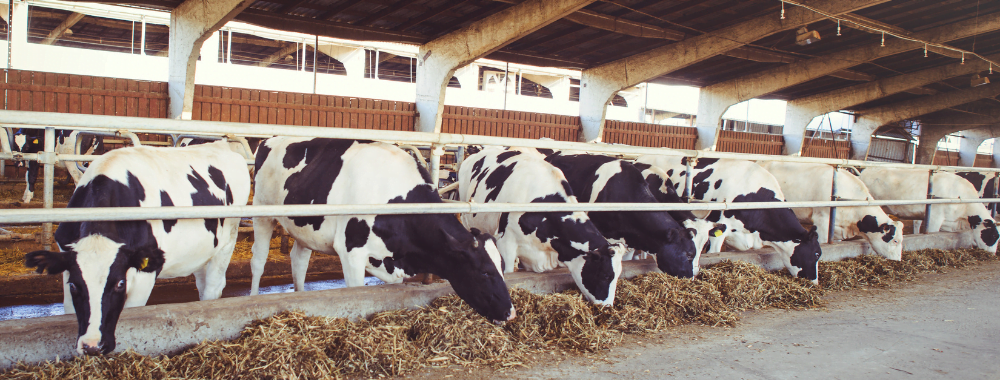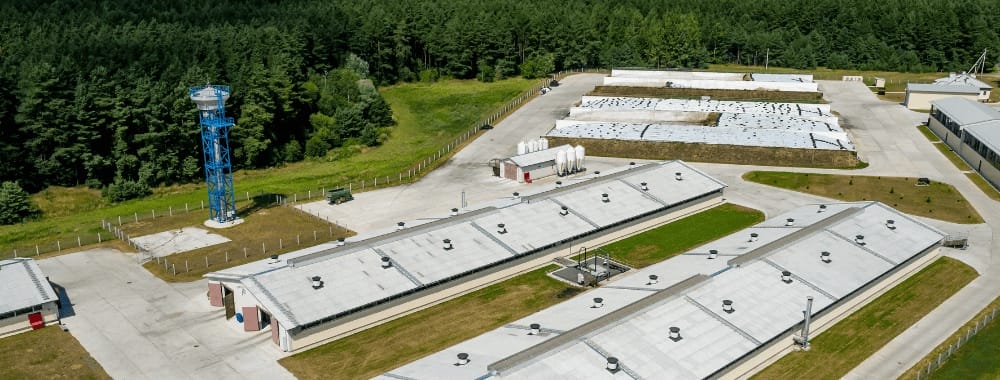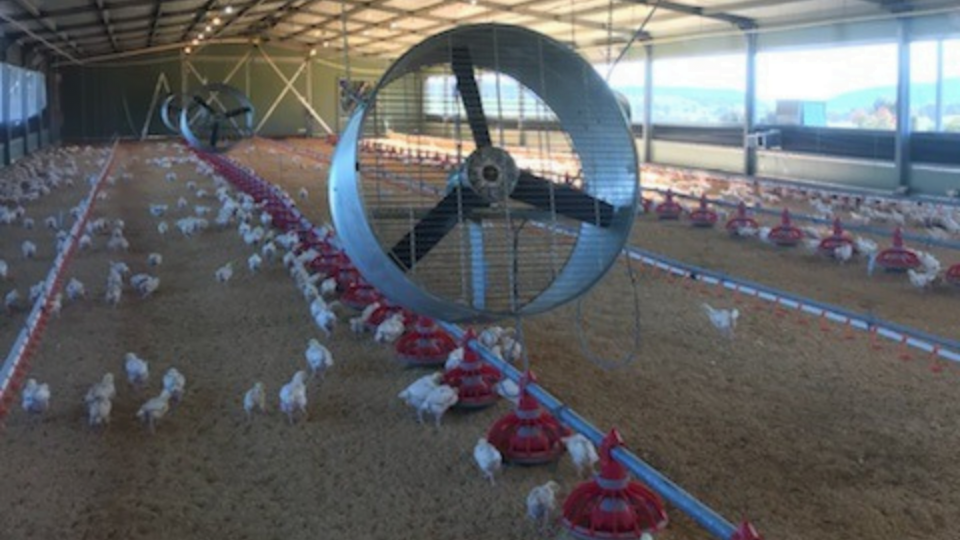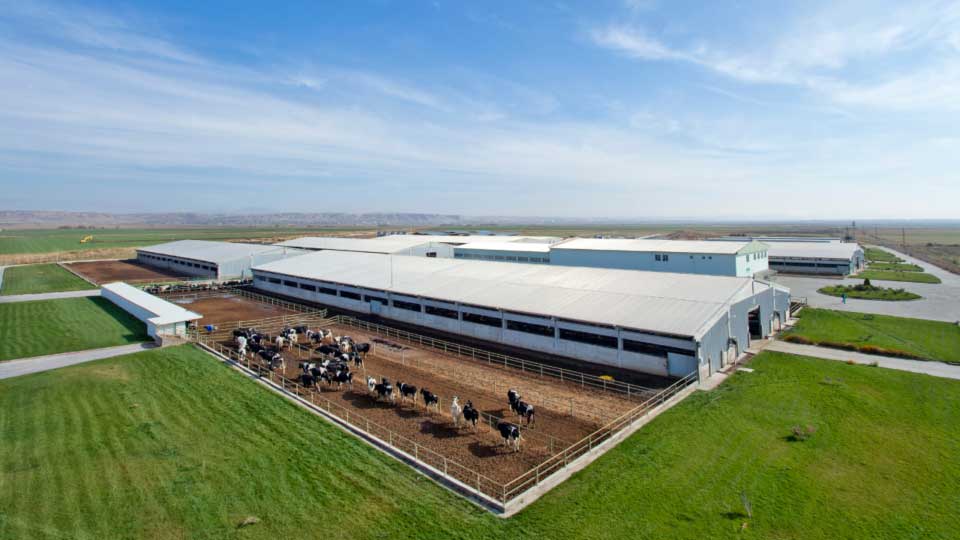Australia has been bearing the brunt of climate change for some time now. Since 1950, each decade has been warmer than the last, and in 2019 Australia endured its hottest year on record, with a temperature of 1.52°C above average. The climate of our continent is increasing in temperature and with warmer weather comes more draughts and an increase in wildfires. This is a significant concern for those working in the agriculture industry, as extreme heat impacts everything from soil fertility to water availability.
The changing climate doesn’t just impact people, it also significantly affects animals and livestock. Animals generate internal heat like humans and need to be kept cool during periods of intense warmth. Overheated animals will eat less, produce less, and gain less weight. Heat stress can also lead to reproductive issues and, in some cases, can actually suppress immunity leading to respiratory problems like pneumonia.
With this in mind, it is crucial to keep your animals healthy by implementing livestock ventilation systems and cooling solutions, keeping vigilant of heat stress. With temperatures expected to soar in 2024 and beyond, it is important to plan for the year ahead.

Livestock Ventilation Systems
Livestock in Australia is often exposed to extreme temperatures which may cause an adverse effect on the health and wellbeing of animals, as well as the productivity of farms. In order to protect livestock against harsh conditions, farmers have implemented a wide range of ventilation solutions to help prevent heat stress among their livestock.
Fresh Water
Livestock need to be kept hydrated, especially during hot and humid periods of weather. Providing fresh water is the best way to ensure your livestock stays healthy and cool in spite of oppressive heat. Stagnant or warm water from ponds, holes and tanks can contain harmful bacteria, so it’s important to give them access to a good quality source of cool, clean water for optimal refreshment and wellbeing.
Shade Cover
It is essential to block solar radiation by providing plenty of shade. Trees are an accessible way to provide natural coverage. Constructing run-in shelters and structures with woven shades can be both economical and effective in providing coverage for larger numbers of animals or an entire pasture.
Livestock Cooling Systems
Livestock owners can benefit greatly from evaporative cooling systems, which offer effective and efficient ways to cool down their animals in hot weather. These systems come in two different forms: fogging and sprinkler systems. Fogging is the preferred method, as it involves spraying water between a fan and the stock, cooling the air before it is blown across the animal. In addition, these systems are highly efficient as they use recirculated water and require only minimal maintenance. Sprinkler systems involve first wetting the animals and then blowing the air on their bodies. Unfortunately, this method can require much more water than necessary, making it resource-intensive. Additionally, damp floors created by sprinklers can increase slipping hazards for hooved livestock.
Misting Systems & Livestock Fans
These systems atomise water into super-fine droplets, which evaporate to create a chill. Misting systems are available with both high- and low-pressure outputs; the former creates a fine mist that cools the air, whereas the latter makes larger droplets which fall directly on livestock to target heat-stressed animals.
While these are all effective solutions that farmers should certainly consider, one of the most effective solutions is the implementation of ventilation and cooling systems. Without proper cooling systems or ventilation, stock can become very uncomfortable in hot weather. Consumers can employ Transformer Cooling Fans or Utility Air Circulators to efficiently move air around livestock areas and combat this issue. Of course, depending on the size of the animal, larger utility fans are necessary for larger livestock, while consumer-grade industrial fans may be ample enough for smaller animals such as chickens.

Why do you need Transformer Cooling Fans?
It’s common knowledge that transformers require regular maintenance and servicing to ensure they remain in good working condition. But what about cooling fans? Oil-cooled transformers need fans to help remove heat from inside the transformer by creating more airflow over its cooling fins. This helps regulate the temperature, preventing overheating, extending your equipment’s life, and keeping your livestock safe.
The main purpose of a Transformer Cooling Fan is to reduce the temperature of the transformer core and windings. By circulating air inside the tank, it reduces hot spots and helps dissipate heat faster than if there were no fans at all. As we know, high temperatures can cause damage to electrical components, so having a fan in place helps prevent this from happening. In addition, having a fan can improve efficiency by reducing energy losses due to heat build-up in your transformer.
The most commonly used type of transformer cooling fan is an Axial Flow Fan. This type of fan uses blades rotating around an axis, drawing in air from one side and pushing it out on the other. The fans are typically installed on top of the transformer enclosure, with ducts connecting them to openings on each side of the enclosure for air intake and exhaust. The fans draw in cool air and push out hot air as they rotate, thus keeping your transformer cool during operation.
Adding a fan to your oil-cooled transformers comes with a number of benefits, including extended equipment life, improved safety for your livestock, reduced energy costs, and decreased maintenance costs. The additional airflow provided by a fan helps keep the internal temperature of the transformer within its safe operating range, reducing wear and tear on components. In addition, cooler transformers require less energy since they don’t have to work as hard to cool themselves down—resulting in lower energy bills. Finally, since a fan requires less maintenance than other parts of a transformer, you will also save money on upkeep costs in the long run.

Livestock Cooling Systems
Livestock needs to be protected from extreme weather conditions, and barns play an important role in providing protection. Designed to ensure the comfort and safety of animals, a well-designed barn should provide shade, extra airflow, a freshwater source, cooling misting systems and fans. Livestock owners must take these vital steps as all animals require shelter during periods of extreme heat or cold to remain healthy and productive. Following best practices for animal husbandry, such as providing ample shaded areas and cooling solutions like misting systems and fans, can help maintain good livestock health and wellbeing.
Fanquip has been providing high-quality ventilation solutions for over 35 years. With expertise, guidance and assistance with choosing the perfect industrial ventilation fan, warehouse fan, or heater best suited for your business needs. Fanquip also specialises in providing custom livestock cooling solutions and designing commercial-grade ventilation systems that keep your facility running optimally year-round.
Check out our Ventilation Solutions for Agriculture & Livestock Industry
